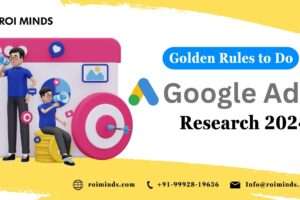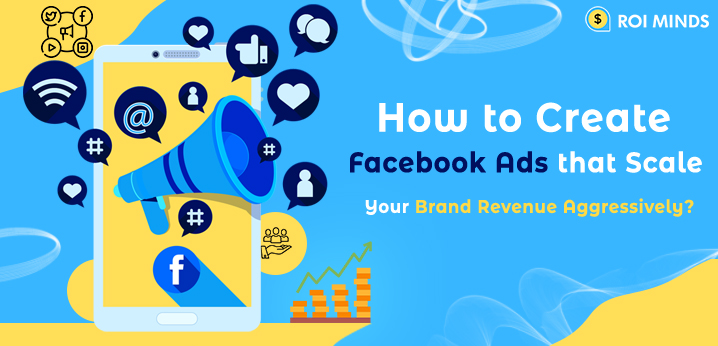In a world full of technological advancements, you want to ensure that you are making the most out of your ad budget. But, with the new Pay Per Click (PPC) Strategies continuously evolving it can be a little hard to know the factors which are worth paying attention to.
Don’t worry, we have your back!
In this write-up, we have covered all the nook and corners of the tactics you can use to establish the best PPC Campaign for better ROI.
Read on, to know more!
ICEBERG THEORY
Do you know that about two-tenths of the iceberg is above the surface, and eight-tenths submerged, and you must be thinking why we are talking about the Iceberg here and how is this related to PPC?
Let us explain you the process in-depths:
The case of PPC campaigns is similar to the Icebergs, as what we can control in PPC is less than what we cannot control. So, things we can control are like the tip of the iceberg (2/10th) and things we can not control are like the submerged part of the iceberg (8/10th).
So, how do you control the uncontrollable?
Here, by tactically analyzing the campaigns, you can get an idea of the data that can help you to control the uncontrollable aspects(the submerged area of the iceberg) of your campaign. Furthermore, to understand this situation in-depth.
What is a Keyword and Search Term?

Keywords are the foundation of everything when we talk about PPC Campaigns. Without a deep understanding of keywords and how to use them effectively, you cannot achieve your goals with PPC. Whereas, search terms are the words that a user types into the search engine when performing a search.
In this case, you can select the keyword you want to add in a particular campaign, but cannot control the search term your user decides to go for. Fortunately, you can control them (as stated above) by using tactical analysis.
Somehow, you can monitor the search terms for better results and can exclude irrelevant words later on. But, when you focus on the search terms reports to add negative keywords, the growth graph you are aiming at will eventually fall downwards. Here, all you need to do is to understand that every search term has a different conversion or sales rate, considering the search term reports.
We suggest you add the search terms as keywords accordingly from the search term reports, as this is the best way to get the effective and complete control over the campaign for better outcomes.
How to control analyze things more granularly for better ROI?
It is necessary for every one of us, to track the budget of our ad campaign along with how it will be utilized on the entry-level. This will provide you with better profits- That is something we all look for, isn’t it? Also, this is the reason why we market our products or services digitally.

Are the keywords, placements or the audience you target giving your business some genuine leads?
Yes, you can get an insight from google ad metrics about your PPC campaign. But, are these leads actually converting into sales or getting disqualified by any means? Let’s explain it with an example: Assume that ABC Company is a Pizza Store and they are using Google Ads to promote their pizza to improve their sales.
For that, they have implemented Call-Only Ads, so when people in their targeted area search for generic pizza keywords their ads automatically pop out allowing the customers to call and place orders.
By using AdWords you can track the conversions or leads, considering the situation ABC Company has set a conversion tracking of 60 seconds to sell pizza by converting a lead. But, in case one of the customers is talking to the executives for more than 60 seconds and not ordering. Here, Adwords considers it as a convertible lead. Also, if an existing customer calls the company using the ad and repeats their order, taking approximately 45 seconds to place the same, Adwords will not track the lead.
Now, the question arises- how can we track such issues in a granular way? There are various methods to do it such as: for ABC Company which sells pizza, they track the leads which can be converted and which cannot be. Additionally, you can use some call tracking and analytics solution for tracking the phone calls such as CallRail, DialogTech, Invoca, Call Box, etc.
To track sales data at a granular level, you can also use automatic ValueTrack parameters or manual UTM parameters.
- A value track parameter or parallel tracking helps to load your landing page faster due to which we can reduce the rate of lost visits due to slow speed. It sends the customer directly from your Ad to the final URL while click measurement happens in the background. Therefore, it’s a click measurement tracking with the help of which we can collect information related to the source of your ad clicks.
- Urchin Tracking Module (UTM) codes are the snippets of text added to the end of your URL to track from where website traffic is coming if users click a link to this URL. This can help you to track down the components of AdWords campaigns a little more deeply and to save your ad spend to get more profitable leads.
TRAFFIC TEMPERATURE
Do you know that the audience who visits your website through Google ads is classified as Cold, Warm & Hot?
You can get a lot of boost in sales by differentiating your audiences and target them accordingly.
Cold Audience, are the users who don’t know about your business, product or service. These types of audiences are a little tricky to convert as your business is unknown to them.
So, how can you pitch them considering their low intent?

Well, you can use Display Ads with cold CTA’s (Call to Action) like Infographics, Industry Stats, etc. It can be done to create your brand awareness by telling them more about your business or services, to target the users who fall under cold traffic criteria. It will help you to convert your lead to a warm audience.
Warm audiences are the users who are in the consideration stage and are looking for a specific product or service. If you place an ad in front of them (which is similar to what they are searching for). There are chances that users might get engage with your ad campaign and don’t take much to buy a product or service.
Here, you can pitch them by adding a CTA (Call To Action) such as free consultation, free demos, ebooks, whitepapers, coupons, and more.
Hot audiences are the user who are aware of your brand’s existence, they have visited your website and stayed there for a long time and had purchased a product or service. Based on their likeness towards your business, you can also pitch them again with CTA’s (Call to Action) such as Consultation, Quote, Purchase, etc.
This is why traffic temperatures matter and can benefit you to differentiate your audience based on the temperature metrics of your ad.
Please note: You can always re-target the cold & warm audiences who falls under the awareness or consideration phases. Furthermore, you can show them your ads by means of retargeting or by giving them some special offers.
Not to forget, hot audiences who had purchased a product or service can also be re-targeted by Upselling and Cross-selling as well as by offering them some special offers so that they can be converted as the most valuable customers for your business.
MICRO CONVERSIONS
Let us start by understanding the term itself: Micro-conversions are the activities that generally engage your user before purchasing your product or services.
For Instance: The tasks involved during a purchase from searching for a particular product to visit the product page to click on the “Add to Cart ” button, this process is known as micro-conversion.
Some more examples of the micro-conversion may include as follows:
- Email signups
- PDF downloads
- Button Clicks
- Filling out a form
- Account signup

Here, it is necessary for you to track down how the actual conversion happened by tracking the customer journey. The most common micro-conversion metrics available in Google ads are Average Session Duration, Bounce Rate, Pages/Session & % new sessions.
If a visitor doesn’t stay on your landing page for a long time, then it would be very difficult to get your lead form filled. Here, the problem is not with the Google Adwords, because the customer is searching for something using a specific keyword and your ad gets displayed. If your ad copies are engaging that will automatically lead the customer to click on your ad from where they will enter the landing page of your official website.
Somehow, due to some abnormal website functionalities like poor user interface, slow speed, non-responsive mobile landing page, etc the customer bounce back then that particular click is considered to be wasted. Similarly, if the methodology you are using to target is incorrect, this means that you are targeting the irrelevant audience, as for them your ads and websites do not hold much of relevance in terms of what they were searching for.
Keeping the basics in mind, you must optimize such metrics effectively along with the website functionality to track your visitors accordingly. Also when a PPC campaign isn’t working, don’t give up. Look for micro conversions you can optimize for getting better results. Once you improve them, you’ll be a step closer to your actual conversion goal.
We hope these tactics may help you to optimize the PPC campaigns effectively to fire up your online presence. Feel free to share your experience by commenting below.




